- Kitchens
- Design Ideas
- Cities
- Trends
- Guides
- Price Calculators
- Our PortfolioNEW
- More
- Home
- Trends
- Furniture And Decor
- Indoor Plants
- How To Care For Monstera Plants
How to Take Care of Monstera, the Swiss Cheese Plant
Monstera (commonly referred to as the Swiss Cheese Plant) is more than an indoor plant; it brings tropical rainforest allure right into your own home! Known for its distinctive leaves with playful fenestrations that create captivating light patterns, Monstera acts as an ever-evolving work of living art that constantly surprises its viewers. This guide recognizes the Monstera’s unique ability to transform any space into an exotic jungle oasis, with its aerial roots and vibrant leaves adding a dash of exotic charm. Monstera family plants – such as Monstera Deliciosa Swiss Cheese Plant and Monstera Adansonii, as well as Variegated Monstera and Monstera Albo – offer an impressive diversity of leaf patterns and growth habits, making them much more than mere decorative plants; they serve as dynamic living sculptures to add their special charm into any interior space.
Table of Content
In this article, you’ll gain the skills and know-how needed to care for a Monstera tree in your home environment, including watering, feeding and pruning it appropriately. We will also explore common challenges faced by Monstera owners such as pest control issues or troubleshooting typical issues that may arise.
The Origin and Characteristics of Monstera
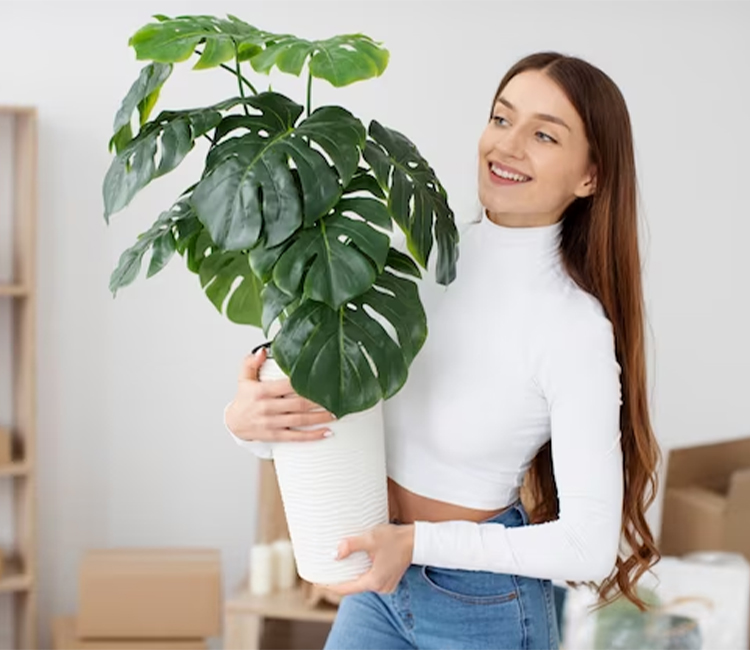
Monstera, known for its distinctive Swiss cheese-like leaves, stands out among tropical rainforest plants of Central and South America. Particularly adaptable to shaded forest floors with dense canopy cover are Monstera Deliciosa Swiss Cheese Plant with large heart-shaped leaves and Monstera Adansonii with smaller, perforated foliage; their fenestrated leaves allow light penetration down lower levels.
Monstera Deliciosa, commonly referred to as the Swiss Cheese Plant, boasts vigorous growth which makes it ideal for indoor spaces. Meanwhile, Monstera Adansonii or Swiss Cheese Vine exhibits vining habits which make it suitable for hanging baskets or trellises, adding an aesthetic flourish in any environment.
These plants are visually captivating while adapting easily to indoor conditions, making them popular among plant enthusiasts of all skill levels. Their ability to purify air further adds appeal, contributing positively to indoor air quality.
Monsteras thrive best when exposed to bright, indirect light similar to what they would find in their rainforest habitat. Direct sunlight may damage its leaves while too little light could limit growth – therefore place your Monstera where it will receive gentle, indirect filtered light for optimal growth.
These plants are not only visually striking but also adaptable to indoor conditions, making them favourites among plant lovers of all skill levels. Additionally, their ability to purify air enhances their appeal, contributing positively to indoor air quality.
Varieties of Monstera

Monstera plants are not just a bunch of leafy faces, but a diverse tribe with stories etched in their fenestrations. Let’s peek into their world, shall we?
Monstera Deliciosa: Big, bold, and dripping with drama, this is the granddaddy of them all. Its leaves, like emerald tapestries, unfold with fenestrations whispering tales of the rainforest. It’s no wonder it’s a plant collection staple ' it commands attention without saying a word.
Monstera Adansonii: Smaller, softer, with fenestrations like tiny windows to the soul. This charmer is a master of hanging displays, its cascading leaves adding a touch of whimsy to any corner. It’s the perfect companion for those who like their green friends with a touch of grace.
Variegated Monstera: A splash of white amidst the emerald, this beauty is like a whispered secret in the jungle. Its leaves, a mosaic of green and ivory, are a collector’s dream, each one a unique masterpiece. Owning one is like carrying a piece of the rainforest’s magic in your home.
Monstera Albo: This is the Variegata’s moonlit cousin, its leaves cloaked in a veil of white. It’s a rare find, a whisper of winter in the tropics. Owning one is like holding a piece of moonlight in your hands, a reminder that even in the heart of the jungle, there’s a touch of magic.
Planting and Repotting Monstera
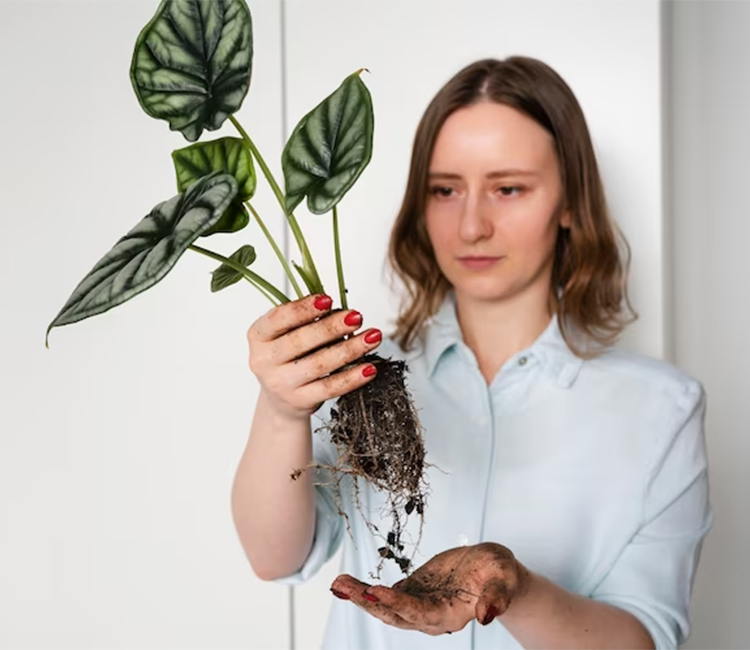
Planting and repotting Monstera plants are crucial steps in their care. Making sure its home is right is key to unlocking its vibrant spirit. Let’s dive into the secrets of planting and repotting, to create a haven where your Monstera can thrive!
Choosing the Right Soil: Think rainforest floor, rich and airy. Your Monstera craves a well-draining mix, like a dance of potting soil, peat moss, and perlite. Imagine tiny roots pirouetting through loose pebbles, happy and hydrated.
Selecting a Suitable Pot: Drainage holes are essential ' think of them as tiny rainforest streams, whisking away excess water. As your Monstera climbs towards the sun, it might need a bigger pot to stretch its rooty legs. Choose one that’s snug but not suffocating, like a comfy jungle hammock.
Repotting Process: Be gentle with your leafy friend! Carefully loosen the soil around its roots, like whispering secrets to release them. Nest it in the new pot, fill with soil, and pat it down ' a firm foundation for exploring.
Post-Repotting Care: Give your Monstera a good drink, like a rainforest rainstorm washing away the moving blues. And hold off on fertiliser for a bit, let it settle into its new digs before diving back into jungle adventures.
Remember, planting and repotting are your chance to connect with your Monstera, to understand its needs and whispers. Proper planting and repotting are essential for the health and growth of your Monstera, ensuring it continues to flourish in your care.
Ideal Growing Conditions

Even jungle magic needs the right environment to bloom truly. So, let’s peek into the secrets of light, temperature, and humidity, the keys to unlocking your Monstera’s vibrant spirit!
Light: Monsteras flourish in bright, indirect light, similar to the dappled sunlight found in their natural rainforest habitat. Direct sunlight can damage the leaves, while insufficient light can stunt their growth. Place your Monstera where it can enjoy gentle, filtered light.
Temperature: These tropical plants thrive best in an ideal temperature range of 65oF – 85oF (18oC – 29oC). Avoid sudden drafts and temperature swings by creating an environment similar to an early rainforest morning.
Humidity: Monsteras prefer an ideal humidity of 60% or above for optimal growth, like that found in their native rainforest environments. Indoor environments with lower humidity levels may benefit from regular misting or the use of humidifiers to achieve these levels and keep Monstera leaves hydrated and healthy.
Remember, creating the right environment is like speaking your Monstera’s language. It’s about understanding its whispers, its need for dappled sunshine, steady warmth, and a touch of humid magic.
Watering and Feeding Your Monstera

Understanding your Monstera’s needs for water and nutrients is the key to maintaining it as part of its natural habitat, the rainforest.
Always pay close attention to the soil when watering your Monstera plant, simulating the intermittent showers of a rainforest. However, overwatering may damage roots; allow a dry spell between watering sessions for best results and always use room-temperature water so as not to shock its roots.
For optimal growth during spring and summer months, feed your Monstera once every month with a balanced water-soluble fertiliser to supply all its necessary nutrients for growth and leaf development. In autumn and winter, however, reduce fertilising to allow it to rest after its active seasons of growth in its native habitat.
By following these guidelines for watering and feeding, you’ll help your Monstera thrive, bringing a touch of lush rainforest vitality into your space.
Pruning and Maintenance
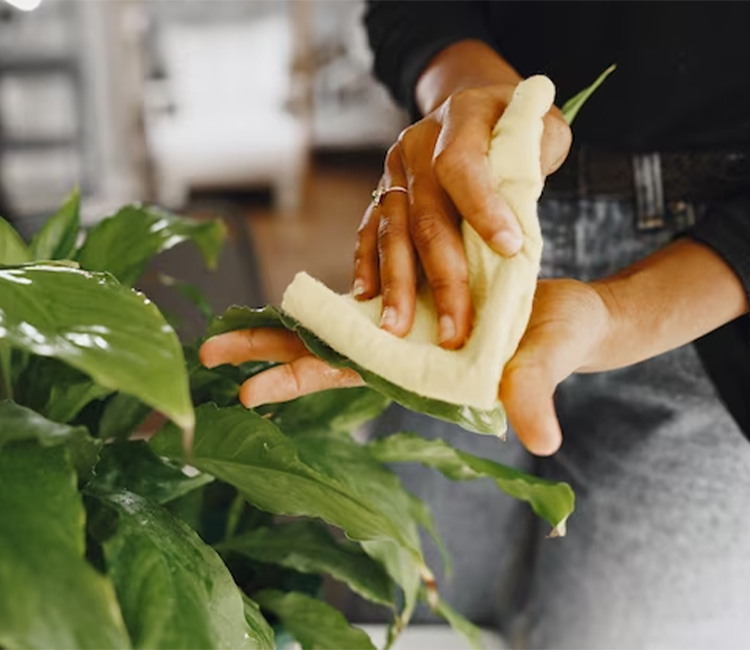
Watering and feeding will help your Monstera thrive, bringing some lush rainforest vitality into your space. Pruning and Maintenance For optimal results in maintaining the health and beauty of your indoor jungle’s Monstera plant, it is important to follow certain essential care practices, including:
For optimal Monstera growth and shape maintenance, regularly prune yellowed or damaged leaves to promote new growth and maintain its shape. Doing this not only refreshes its appearance but also prevents overgrowth from taking hold. Cleaning monstera leaves is critical as dust can impede photosynthesis by blocking sunlight. Keep leaves looking their best by gently wiping them with a damp cloth for maximum health and shine. Stakes or moss poles should be used to support your Monstera plant’s natural climbing tendencies and encourage its healthy development.
Common Pests and Problems

Even in the sun-dappled havens we create, our Monstera friends can sometimes encounter challenges. But fear not, we can equip ourselves with the knowledge to address these bumps in the leafy road:
For optimal plant health, regularly inspect for spider mites, aphids and scale insects. Treat any infestation promptly using insecticidal soap or neem oil as soon as you discover it to ensure the well-being of your plant. To avoid root rot in Monstera plants, avoid overwatering them and ensure their soil drains well, letting the soil partially dry out between watering sessions.
Addressing these concerns proactively will allow your Monstera to remain healthy as part of an indoor garden.
Monstera and Air Quality
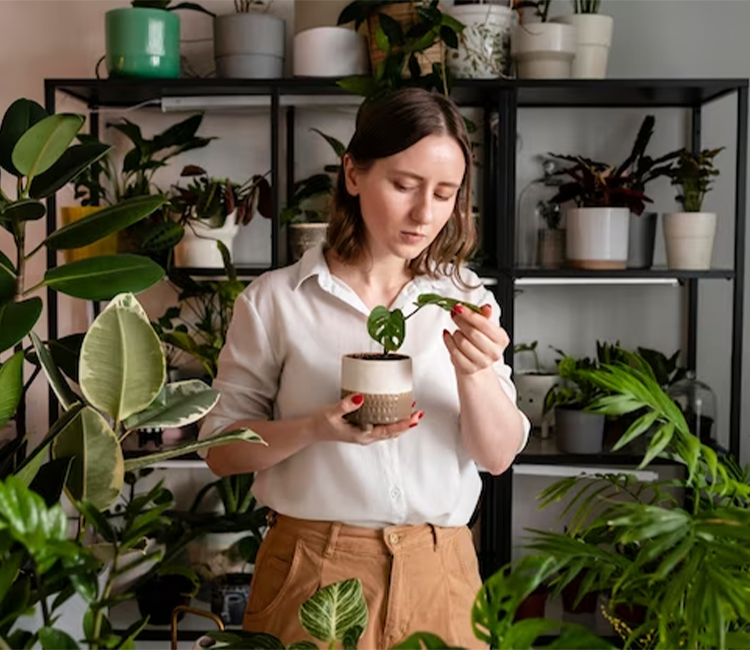
Monstera goes beyond being just an Instagram-worthy spectacle to become a protector of your wellbeing by improving air quality in your home. These plants do more than beautify; they actively contribute towards creating a healthier environment.
As natural air purifiers, Monsteras excel in absorbing common household toxins like formaldehyde and benzene. Their fenestrated leaves work like tiny air filters, pulling in pollutants and releasing cleaner air, providing a breath of freshness in your living space. This purifying action not only improves the air quality but also serves as a testament to their understated power.
Moreover, Monsteras help regulate indoor humidity. In environments where dry air prevails, these plants act like miniature rainforests, releasing moisture and increasing the humidity levels. This not only enhances your comfort but also benefits your skin and respiratory health, mimicking a natural, tropical mist that rejuvenates and refreshes.
Monstera in Interior Design
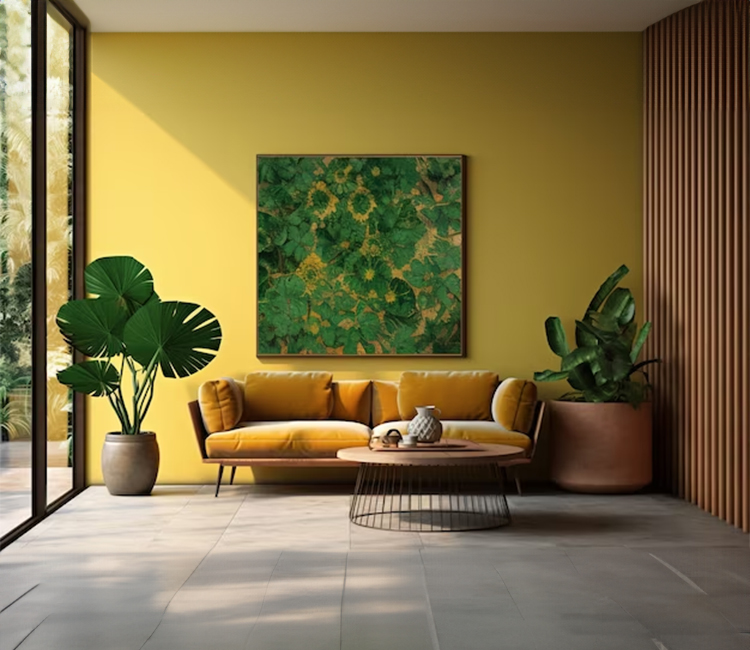
The Monstera, more than just a houseplant, is a style architect. Its unique, fenestrated leaves transform spaces into vibrant oases, acting as living art installations. In any setting, a Monstera creates a natural focal point, its lush fronds unfurling like a living tapestry that draws the eye and anchors the room. This plant embodies tropical fusion, blending the jungle’s wildness with modern design elements, harmonising with sleek lines and contemporary aesthetics.
Its adaptability makes it a chameleon in various decor styles. In minimalist spaces, it adds organic warmth, while in more vibrant settings, it provides a soothing green counterpoint. The Monstera is not just about aesthetics; it plays a crucial role in spatial dynamics. It fills awkward corners, balances room proportions, and breathes life into sterile areas. Whether it’s a towering Deliciosa making a bold statement or a cascading Adansonii softening sharp angles, the Monstera reshapes and enhances its surroundings.
As a transformative element in interior design, the Monstera offers more than beauty; it brings architectural alchemy to living spaces. With its graceful presence, it has the power to transform rooms into leaf-unfurling masterpieces, merging nature’s charm with architectural elegance.
Conclusion
Monstera plants have been an eye-opening discovery journey, showing us just how versatile this tropical beauty truly is. Not just an Instagram hashtag, it provides the means for creating an indoor jungle full of vibrant foliage reminiscent of rainforest environments in your living room. But their allure goes far beyond visually striking window sills: this plant appeals to gardeners of all experience levels; beginners appreciate its forgiving nature, while experienced enthusiasts take pleasure in its growth and propagation challenges.
By welcoming a Monstera into your home, you embrace more than its beauty; you invite a world of joy and natural wonder. Imagine mornings graced with sunlight filtering through its leaves, casting serene shadows, and your living space turned into a verdant sanctuary, where each breath intertwines with the rustle of its lush foliage. The Monstera isn’t just a plant; it’s a companion on a journey of growth, beauty, and the subtle, enchanting magic of nature, unfurling one leaf at a time.
Want some more inspiring decor ideas and suggestions? Get in touch with the experts at Interior Company, crafting bespoke and livable designs for you and your loved ones.
*Images used are for illustration purposes only. Interior Company does not hold any copyright to the images unless mentioned explicitly.
Top Interior Designers in Your City
Ready for a home transformation?
Let our designers assist you!
Recent Posts
Water your Monstera when the top inch of soil feels dry, typically once a week. Avoid overwatering, as it can lead to root rot. The frequency may vary based on the environment and the season.
Yes, they prefer humid conditions, similar to their native tropical environment. Aim for 60% humidity or higher. Misting the leaves or using a humidifier can help in drier climates.
Repot your Monstera every 2-3 years or when it outgrows its pot. Choose a pot that is 2-3 inches larger in diameter with good drainage. Spring or early summer is the best time for repotting.
Use a balanced, water-soluble fertiliser once a month during the growing season (spring and summer). Reduce feeding in fall and winter when growth slows.
Prune in spring or summer by cutting off yellow or damaged leaves and trimming back any leggy growth. Use clean, sharp scissors or pruning shears.
Related Category
- Balcony
- Bedroom
- Home Decor
- Living Room
- Outdoors



































